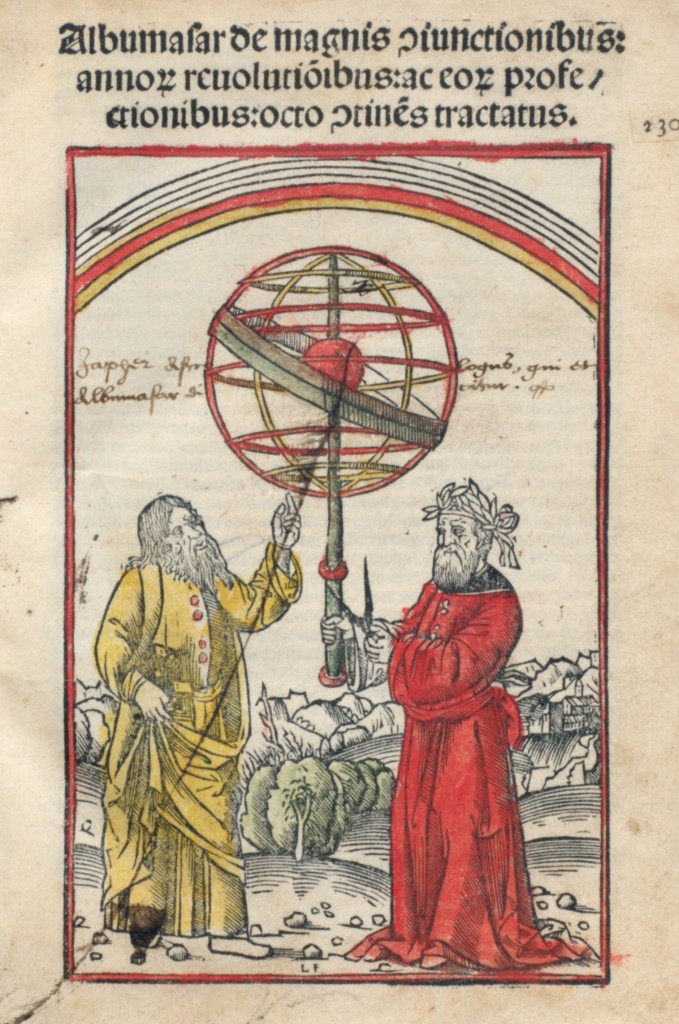We recently had the pleasure of welcoming PhD candidate Justin Rivest as an Osler Library Travel Grant recipient. Justin grew up on a farm in southwestern Ontario and did his Bachelor’s and Master’s degrees at Carleton University. His MA is in History (Early Modern Europe) and he is currently a PhD candidate at the Institute for the History of Medicine at Johns Hopkins. Here’s what he had to say about his recent trip to the Osler Library.
My work at the library grew out of my MA thesis, which was a study of French almanacs and prognostications from the 1490s-1550s and led me to an interest in the links between astrology and medicine. While my dissertation has come to focus on a different topic (proprietary remedies in seventeenth century France), Renaissance astrology has remained a persistent research interest. I’d been looking for an opportunity to spend some time with a good collection of Renaissance astrological texts, with the goal of better understanding how almanacs and prognostications were produced. I was pleased to find good collection of early printed astrological treatises at the library, including a copy of the Ephemerides Magistri Johannis de Monte Regio, a series of celestial ephemerides for the period 1492-1506 produced by the 15th century German mathematician Regiomontanus, which was probably the most interesting and useful thing I was looking at during my visit. Ephemerides were one of the most important tools available to Renaissance astrologers, furnishing the raw data and tables of planetary movement needed to create astrological charts, birth horoscopes, or annual prognostications of the general conditions in the coming year, such as are found in almanacs.
Modern day readers might typically associate almanacs with farmers and weather, but early modern almanacs were often produced by learned physicians and contained important medical information. The positions of celestial bodies and the moon were understood to affect the human body. While a birth horoscope could tell a physician about an individual patient’s humoral complexion, medical almanacs gave doctors and barber-surgeons general information for tabulating propitious days for therapeutic interventions such as bloodletting. For example, a common piece of advice was never to let blood from a part of the body if the moon was in its associated sign, e.g. Aries for the head or Pisces for the feet. This medical information would be placed alongside other things such as the dates of new and full moons, feast days, etc. that we would normally associate with a calendar. Almanacs of this type were initially circulated in manuscript form, but the advent of print vastly expanded the audience for almanacs and provided increasing numbers of astrologers with the astronomical resources (like Regiomontanus’ ephemerides) needed to produce them.
By the end of the fifteenth century, almanacs were drawing on data about the planets and signs of the zodiac to predict everything from warfare to drought and plague, based on sets of associations drawn from natural philosophy. The five known planets and the twelve signs, for instance, were associated with the four qualities of hot, cold, wet, and dry, the four elements, the four humours, the four seasons, and even the classes of society. Saturn, for example, was associated with the rich, religious men, farmers, and the old, so the state of Saturn in the heavens could affect their conditions on earth.
As for what led me to this topic: in general I’m fascinated by the medieval and Renaissance view of an integrated cosmos, designed by a provident creator to be full of associations and sympathies. The associational framework of astrology, with its harmonies between the heavens, the elements, and the human body, strikes me as one of the most beautiful manifestations of this view of the cosmos.
Read more about Justin’s work in the latest issue of the Osler Library Newsletter and stay tuned for another upcoming entry on Renaissance astrological tables.



